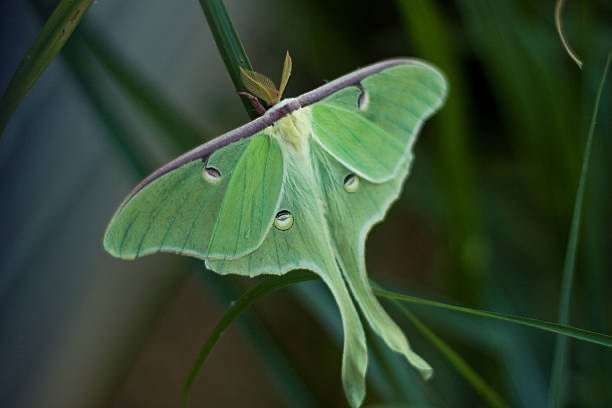The Monthly Month: The Luna Moth
Introducing February’s moth!
January 3, 2023
Often viewed as nuisances with a craving for your favorite clothing or as a creepier version of a butterfly, moths go unappreciated by many. The truth is, however, that they’re much more interesting than people give them credit for. Welcome to the first article of The Monthly Moth, a recurring series that explores different species of moths and highlights the unique traits of each one!
Moths and butterflies are commonly confused, and there aren’t many set guidelines for differentiating the two. They both belong to the order Lepidoptera, though moths make up the majority of this order. Moths tend to have fuzzy, slightly thicker antennae than butterflies, who usually have thin, club-tipped antennae. Moths also generally rest with their wings parallel to the ground, whereas butterflies rest with them perpendicular to it. Finally, the majority of moths are nocturnal or crepuscular, meaning they’re active at night or during twilight hours; butterflies, on the other hand, are typically only active during the day.
Enough background. This month’s article is about one of the most well-known moths: the luna moth, also known as the American moon moth. They’re noted for their vibrant green wings, which are lined with red along the upper edges, and the tails trailing off their hind wings. Each of their wings is also accented with a brown eyespot, which is sometimes ringed with pink, black, or white. Luna moths (Actias luna) are part of the family Saturniidae, or great silk moths.
Luna moths spend most of their lives as larvae, appearing as light green caterpillars with yellow and red spots for three to four weeks. These red spots—along with the eyespots that appear once they mature—act as a form of mimicry and scare off predators. Luna moths aren’t actually poisonous, but their red coloration and the clicking noises they make serve as a version of self-preservation. Caterpillars enjoy the leaves of walnut, hickory, sweet gum, and paper birch trees. As adults, they have incredibly short lifespans, only surviving for about one week; this is true for most great silk moths, however, as they don’t eat after emerging from their cocoons because they don’t develop mouths.
Look for luna moths after dusk in deciduous forests across the east coast, but bear in mind that seeing one isn’t common due to their short life expectancies. They’re most commonly active from March until September each year; during the winters, they spin themselves into a cocoon to wait out the colder weather. The beauty of these moths is fleeting, but don’t touch one if you see one—their wings are covered in thousands of minuscule scales, as are the wings of most moths, and touching these could cause them to fall off. Consider yourself lucky to have seen one, but don’t disturb it; simply enjoy its limited presence.






















